Arm Armor
We present to you our take on XIV century spaulders worn with lentner or coat armor. The anatomical shape provides excellent mobility and nicely complement steel arm protection from the XIV century. They are equipped with leather points with holes to enable you to easily affix them to your padded gambeson. Additionally, we have included
This model of shoulder protection was inspired by Milanese spaulders – espalderium. Our Segmented Spaulders are smaller than their historical XV century Milanese counterparts. This makes them more comfortable to use. The so-called “wings” of Milanese spaulders were quite big, such that they sometimes overlapped each other at the shoulder blades. This was done with
Italian style spaulders (also called “narrow spaulders”) from the late XV century. Our Narrow Spaulders are based on the armor of Kaspar of Frundsberg which is preserved in the Kunsthistorisches Museum in Wien, Austria. Our Narrow Spaulders consist of 3 narrow bicep plates, a shoulder cup and a long bicep plate which extends to the
The original artifact pauldrons which reside in the Churburg armor collection were made by the craftsman Biagio for Giovanni Spanzotti in Milan sometime between 1420 – 1460. They are decorated with engravings and the inscription “Urs”. On the rear side, the armor is punched with themarks of Italian masters. The pauldrons are made in the
We have created a faithful replica of the late XIV century arm harness found in Churburg Castle which consists of vambraces, elbow cops, rerebraces, (which cover the biceps) and articulation segments. Our Churburg Arms are equipped with leather straps and steel buckles and are painted inside to prevent rusting. The vambraces are anatomically shaped and possess
If you are looking for basic, practical elbow protection, look no further. The lightweight, plain shape of Steel Elbows provides perfect mobility. The Steel Elbows have leather straps and laces for a secure fit exactly where you need it. They’re a great addition to any set of armor. N.B.: The listed price is for a
Our Covered Gloves allows for the full range of motion for each finger which helps you to handle any weapon more easily, but without sacrificing protection. The inner layer of the gloves is covered with protective paint and is partly fastened with natural leather. The leather gloves in the interior provide excellent weapon-grip and the
If you are looking for basic, practical bicep protection, look no further. The lightweight, plain shape of our Steel Biceps provides perfect mobility. The Steel Biceps have leather straps and laces for a secure fit exactly where you need it. They’re a great addition to any set of armor. N.B.: The listed price is for
Beginning in about the XIII century, knights’ equipment started to include metal gauntlets. Metal gauntlets were expensive to manufacture because they required great skill on the part of the armory smith. In addition, steel was still an expensive material and as a result, only kings and wealthy knights could afford metal gloves. The poorer warriors
Our Fencing Gauntlets are of the well-known “Hourglass” style adapted for medieval fencing. Made of cold-rolled steel, the finger plates have a thickness of 1.5mm (knuckles and metacarpals) and 1.0mm (all other areas). The special shape of the metacarpal plate provides full articulation and inner leather gloves are included for increase comfort and grip. The
Our Splinted Arm Protection is based on armor from the XIV century. We craft it from 1.5mm cold rolled steel and durable 4mm brown leather. To increase the protective properties of the leather it is treated with a special wax solution and can withstand axe blows. The leather we use is naturally flexible and the reinforcing steel
Our Brigandine Arms are completed with steel elbow cops and the plates are made of 1.5mm cold rolled steel. Each plate is covered by the black paint on both sides to provide additional protection against rust (with the exception of the elbow cops which on painted on the interior only). The inner material is canvas,
Medieval Arm Armour
The topic of arm protection is particularly interesting and is a pertinent topic to armor smiths and armored fighters alike. Crafting and wearing arm armor is not as simple as saying “Well, you need full arm armor, which consists of shoulder armor, rerebraces, elbow armor, and vambraces.” Before you purchase your set, you need to understand the purpose of your arm armor. In one instance, you might need armor to protect you during the buhurt. In another, you’ll need a good articulation because you’re planning on participating in HMB or IMCF duels. In both cases, you need armor for your arms, but your approach will differ based on your goals and needs.
Show more...
First of all, let’s walk through the main parts of armor for arms and take a closer look at their details. Arm protection starts with shoulder armor. We recommend paying special attention to this part, because shoulders are the most vulnerable to impact and often get hit. Good shoulder armor can and should withstand both sword and halberd. Consider the thickness of this armor segment – while 1mm metal thickness is enough for dueling, you will need 1.5mm thickness for buhurt.
Bicep armor and vambraces typically have a metal thickness of 1mm, which is enough for both buhurt and duel. However, of course, you should also consider your personal preferences and take care of your health.
Moving on to elbow armor – it is almost always 1.5mm thick. This thickness is due to a technical part of production. But don’t worry, it doesn’t affect the overall weight of your arm armor. When we’re talking about the armor’s weight, it’s important to understand that your arms should be as lightweight as possible. Your arms move the most during the battle, and even 100 grams of additional weight can affect your stamina, which is crucial for you and your team. Don’t let anyone down and reduce the weight of your arm armor as much as possible (but as always, safety first!).
According to HMB and IMCF regulations, you can use armor from the XIII – XV centuries. In the XIII century, armored European fighters mostly used brigandine arms and other simple armor to protect their arms. However, by the XV century, metal plates appeared that connected the armored elements for the shoulders, biceps, elbows, and forearms. Naturally, a structure connected with rivets offered more protection, but arm armor that was laced together offered a lot more mobility.
The issue of aesthetics and personal taste cannot be overlooked either. By opting for brigandine arm armor, you can choose from a large assortment of fabrics to cover your armor. It can be monochrome wool with a large selection of colors, or tapestry fabric just like you’ve seen in paintings at a museum. It’s also worth mentioning that the metallic parts of these pieces of battle equipment are painted over on both sides, which removes the need for care to some extent. Nevertheless, you can always choose a non-corrosive material and get so-called “white armor” which doesn’t use fabric or leather, except for straps, of course.
Don’t delay your dreams – purchase your arm armor today! If you have any questions – ask away. We’re always glad to talk about medieval battles and armor.
less..


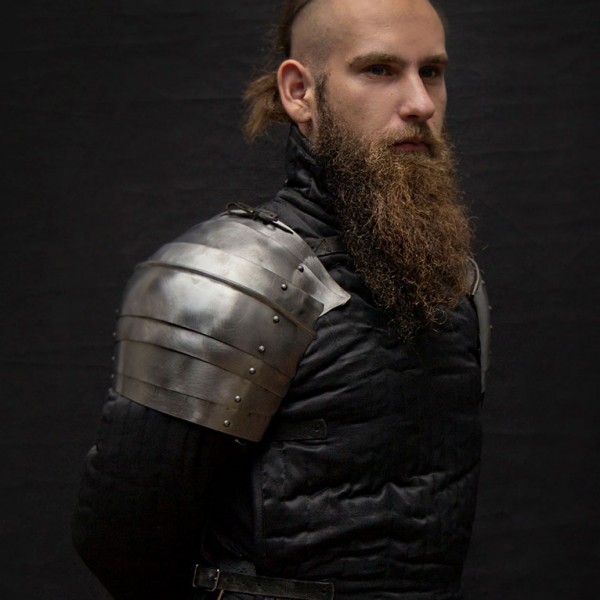
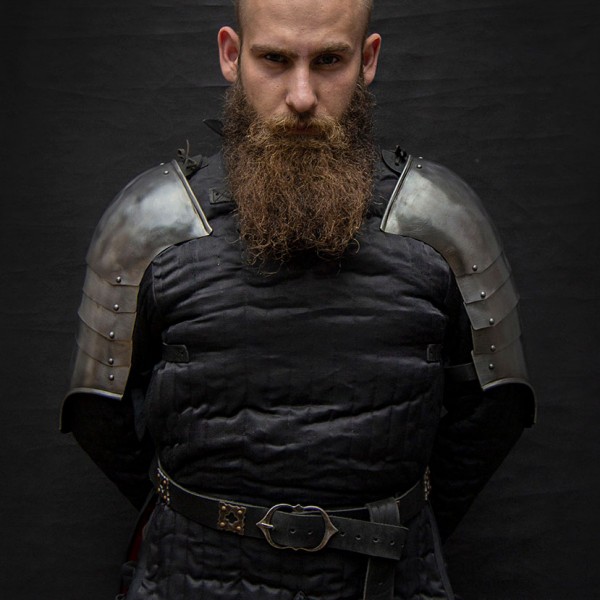


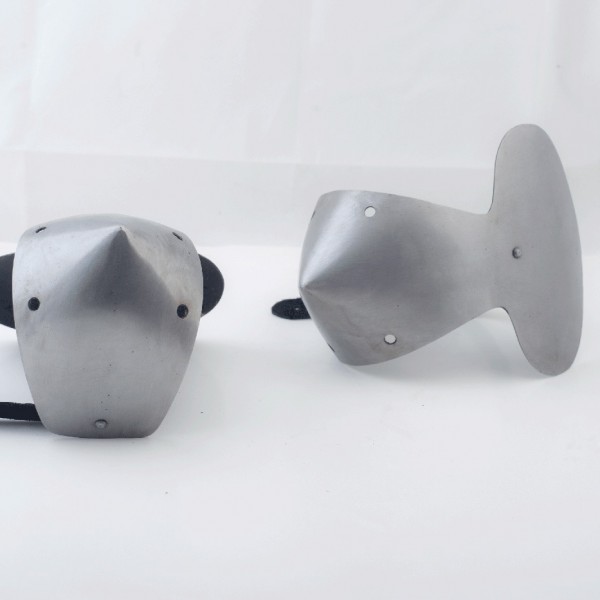
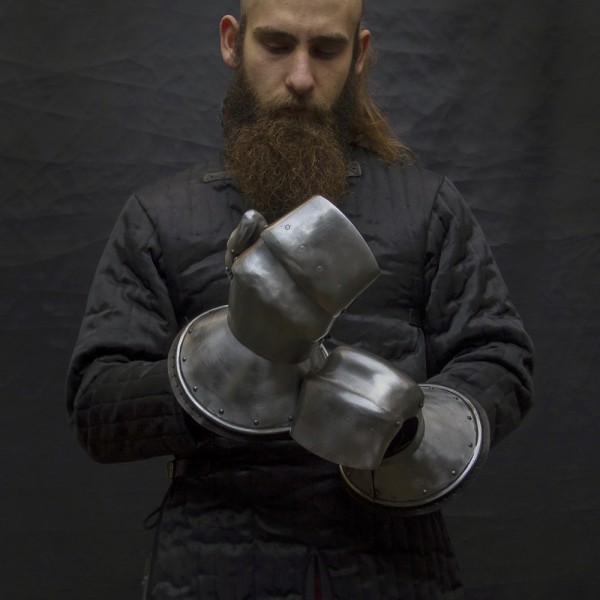
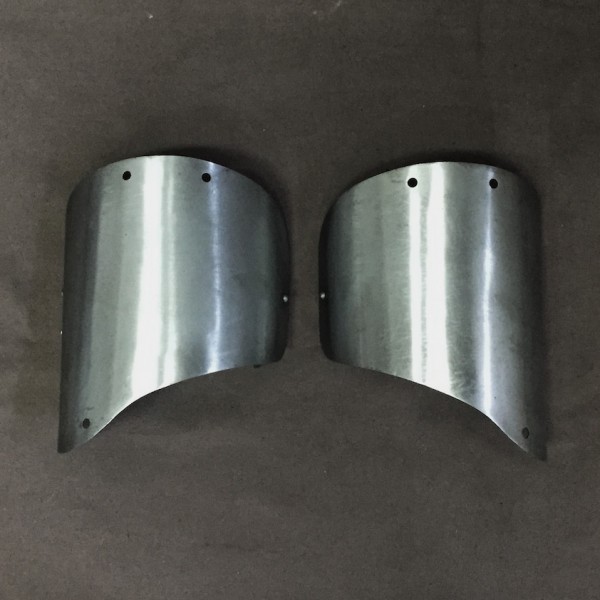

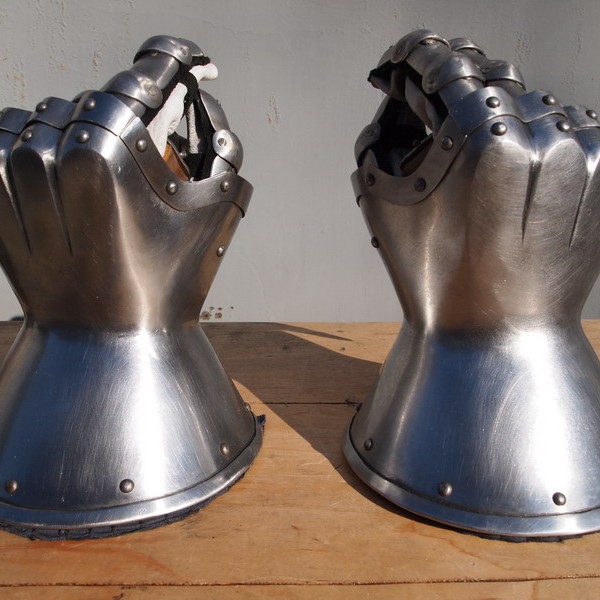

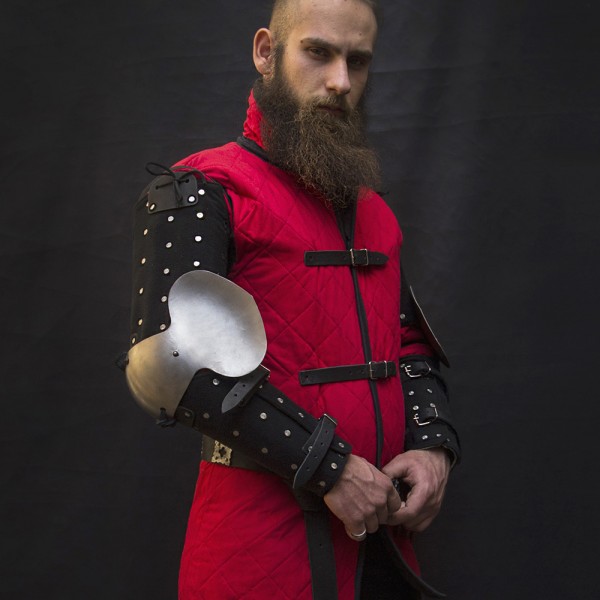
 Shop
Shop